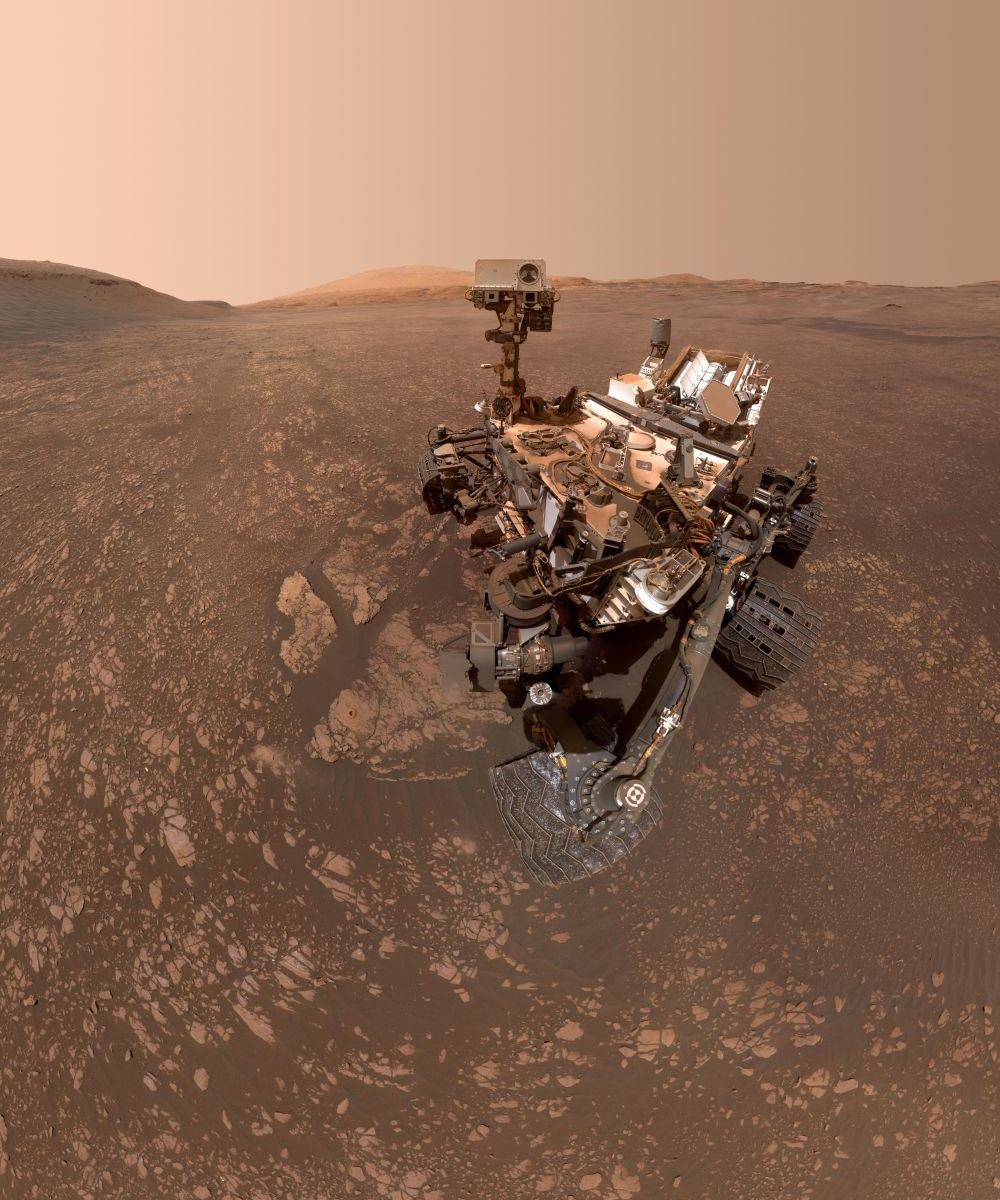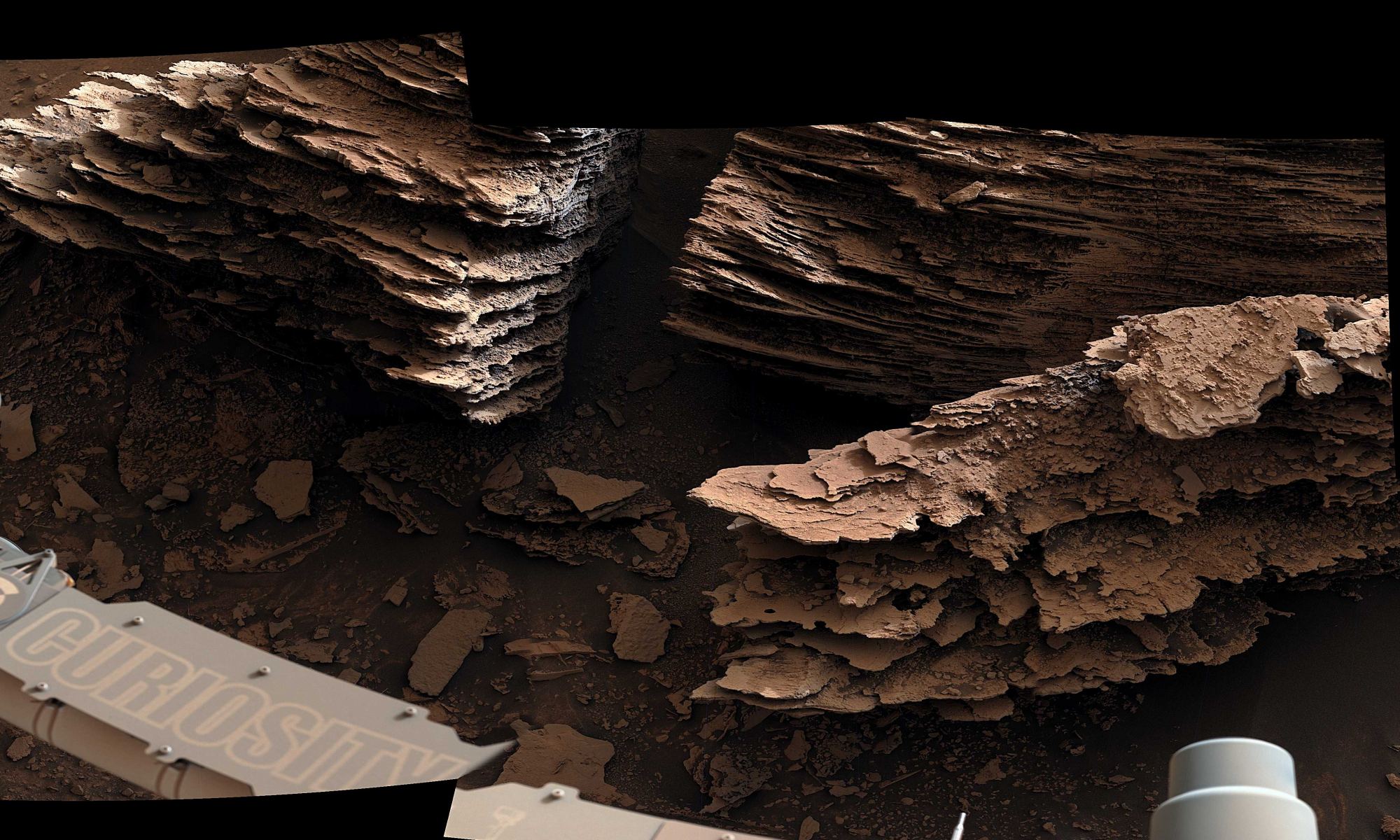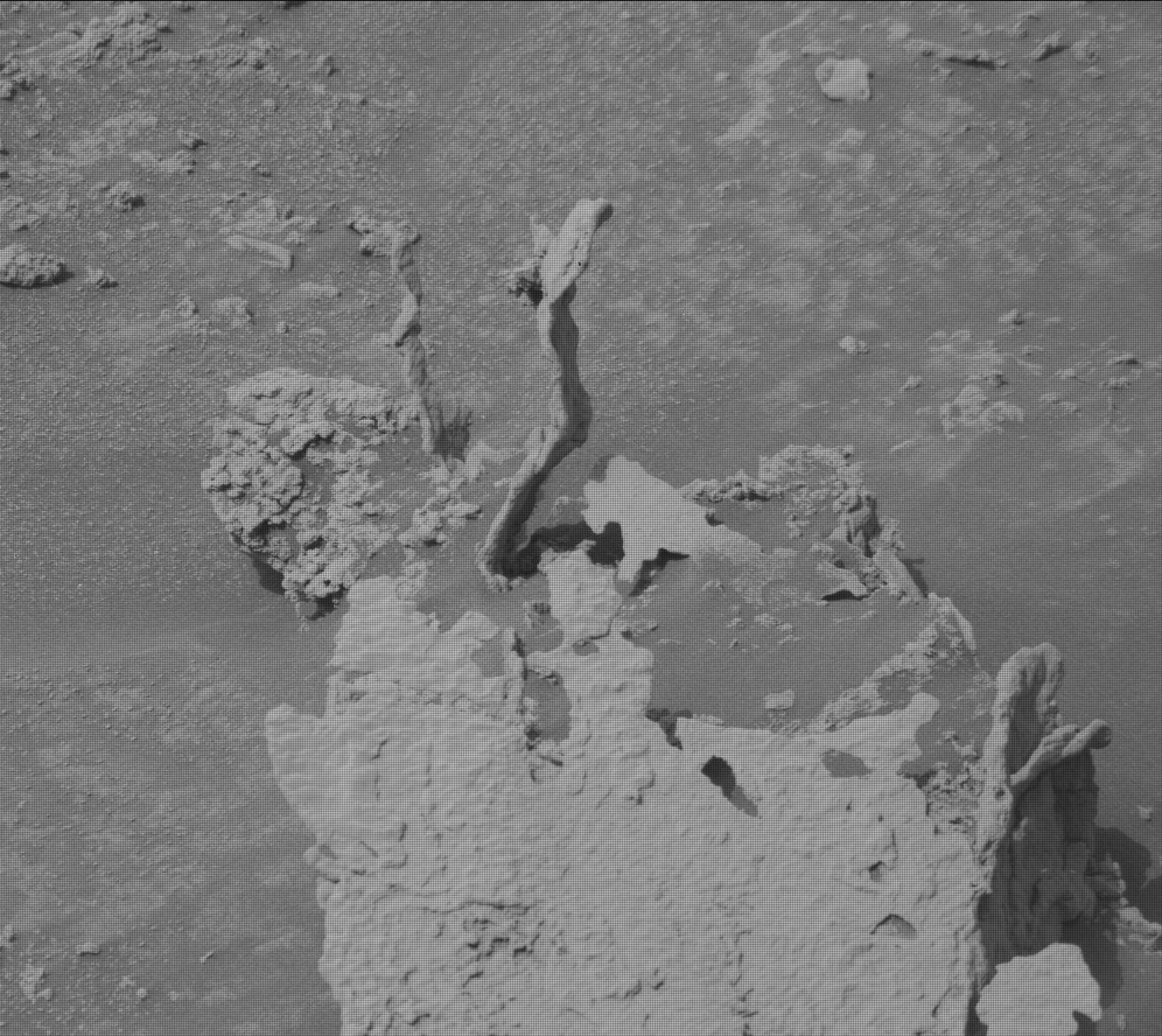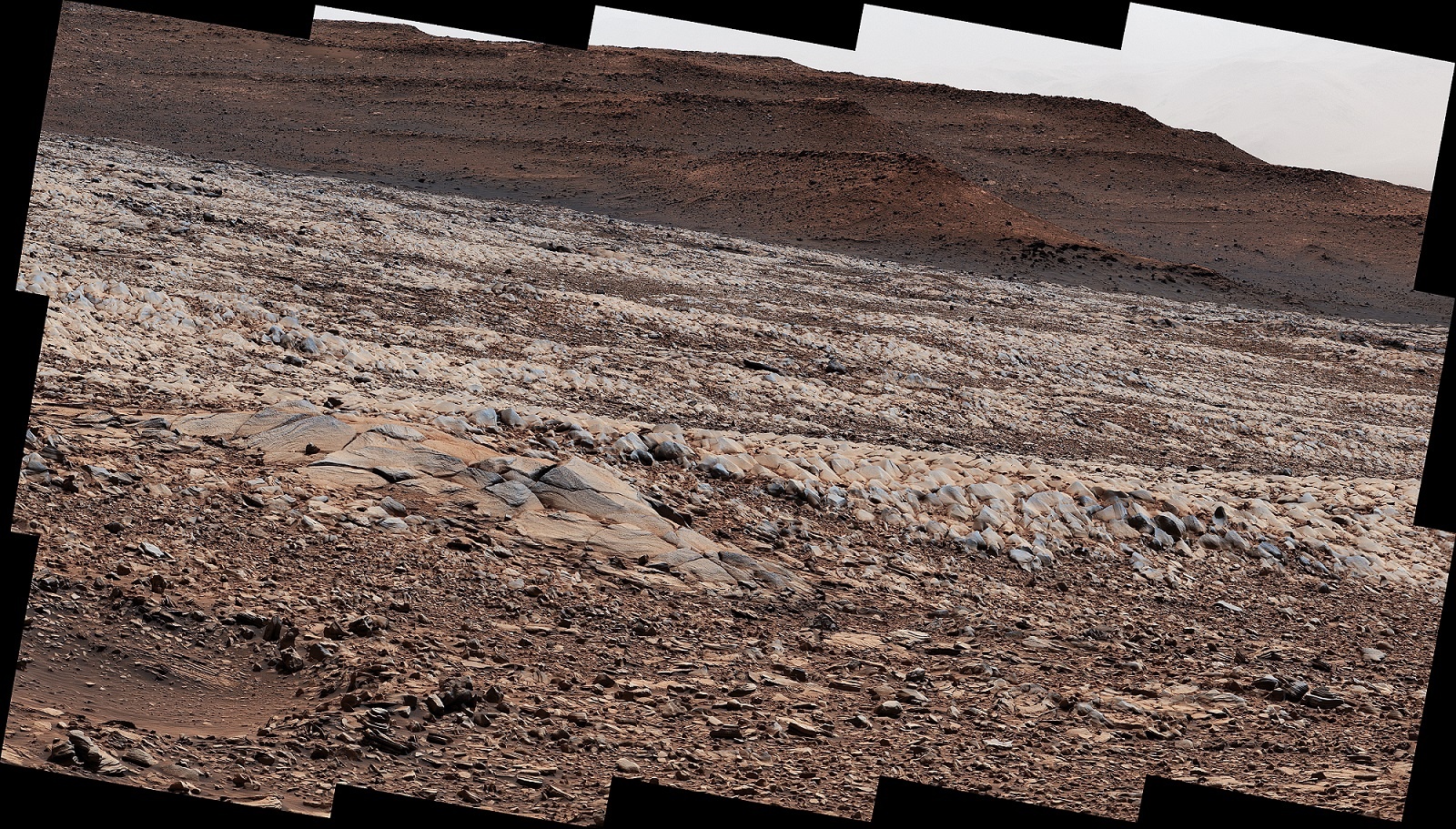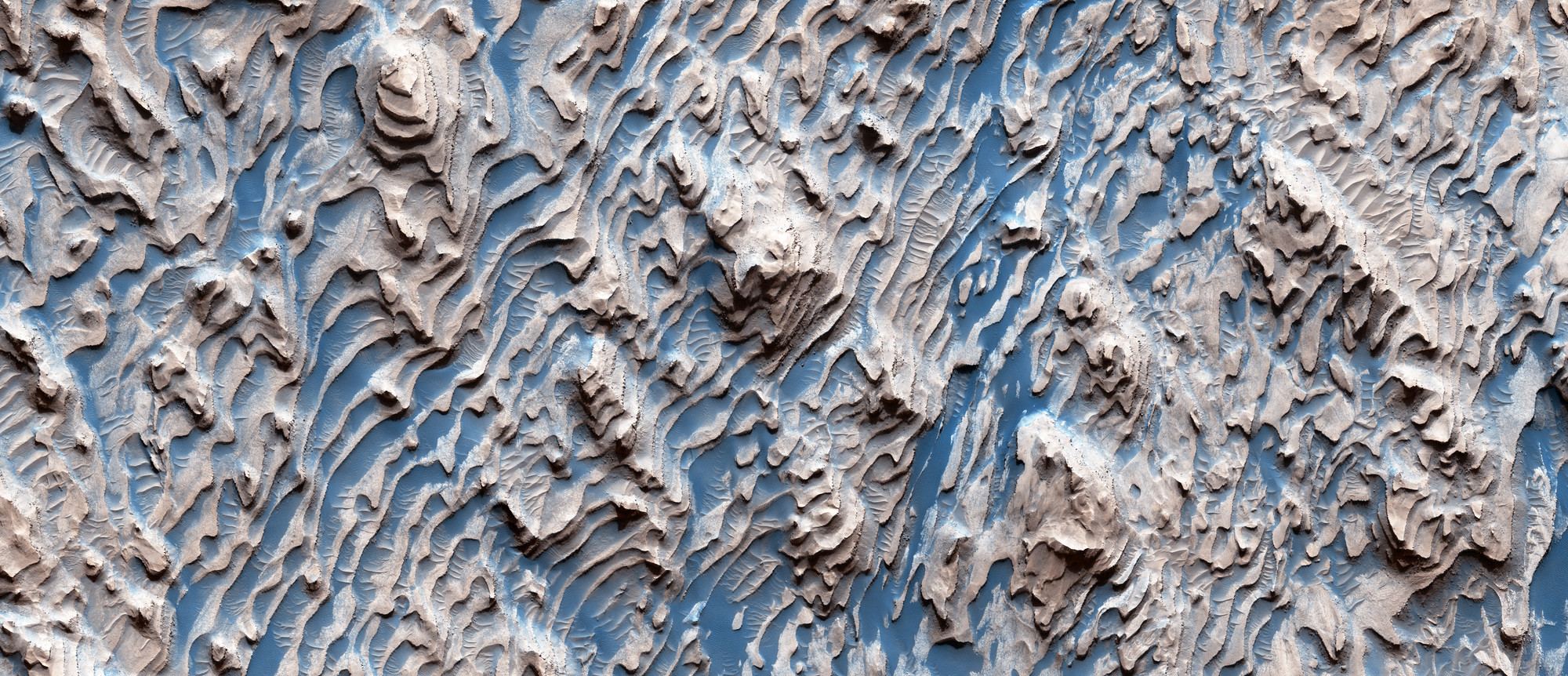Since 2012, NASA’s Curiosity rover has been exploring the Gale Crater for clues about Mars’ past and possible evidence that it once supported life. For the past year, this search has centered on the lower levels of Mount Sharp, a transitional zone between a clay-rich region and one filled with sulfates (a type of mineral salt). These regions can offer insight into Mars’ warm, watery past, but the transition zone between them is also of scientific value. In short, the study of this region may provide a record of the major climatic shift that took place billions of years ago on Mars.
For example, this region has unique geological features that include clay minerals that appear as flaky layers of sedimentary rock. One in particular, “The Prow,” was recently imaged by Curiosity and had the mission science teams buzzing. These features formed when water still flowed into the Gale Crater, depositing sediment at the base of Mount Sharp. Higher on the mountain, the hill was likely covered in wind-swept dunes that hardened into rock over time. In between them is where the flaky layers formed, possibly as a result of small ponds or streams that wove them among the dunes.
Continue reading “Amazing Flaky Martian Rocks Were Formed in a Stream or a Small Pond”




